Posted: February 25th, 2012 | No Comments »
I’ve been reading Selina Hasting’s excellent biography of W Somerset Maugham The Secret Lives of Somerset Maugham, a great read. We’re going to both be at the Adelaide Writers’ Week imminently so I thought it time for a Maugham Weekend Special. Hastings points out a few early contacts with China and the East that the young Somerset Maugham had. For instance:
- in 1890 Maugham went to Heidelberg to study at the university one of the members of his multinational class was a young Chinese, an early Chinese student in Europe;
- Maugham’s great friend the painter Gerald Kelly (1879-1972) went on a short trip to Burma in 1908 claiming he went ‘for the light’. He didn’t stay long though but at the time Maugham recalled that he started to think about ‘the East’ a little more than before;
 One of Kelly’s Burmese portraits
One of Kelly’s Burmese portraits
- in 1911 Maugham wrote that his thoughts were ‘turning east’ – specifically to Bangkok, the ports of Japan and Shanghai and that he was thinking of ‘pagodas and the scents of the Orient’;
- Kelly was planning a longer sojourn back to Burma but Maugham told him that while he would consider accompanying him, China was his desired destination. In the end war and Maugham’s bad lungs intervened in their plans;
- During WW1 Maugham was, of course famously, an operative for the British Secret Service (as recalled in his spy stories Ashenden). This rather buggared up his generally weak lungs and in 1916 he was told by his doctor that he needed to seek out a warmer climate in which to recuperate – an ideal opportunity to visit the South Seas, Polynesia, Tahiti etc etc, of which he had enjoyed reading adventures about as boy, which led to us getting The Moon and Sixpence, Maugham’s novelistic biography of Gaugin. But he never got the Far East;
- Then in World War One he was sent to Petrograd and travelled there from San Francisco. His ship stopped at Yokohama marking his first stay in the Far East – “tantalizing” Maugham wrote;
- In 1919 with war over, lungs better and a nice bank account thanks to plays, Moon and Sixpence and his spy tales Ashenden. Maugham declared his intention to “conquer the Far East”. He finally left Liverpool in August 1919, sailed to New York, went to Chicago to collect his companion Gerald Haxley, trained across to California and then finally to the Far East.
- Finally, Maugham gets to Hong Kong, Shanghai, up the Yangtze to Chengdu, across to Peking and then Mukden before returning home via Japan and Suez. The world got On a Chinese Screen, The Painted Veil and his play (forgotten but not too bad) East of Suez.

Posted: February 24th, 2012 | No Comments »
Janet Chen’s Guilty of Indigence: The Urban Poor in China 1900-1953 looks very interesting. As usual blurb below – also a Q&A with the author here on The China Beat.
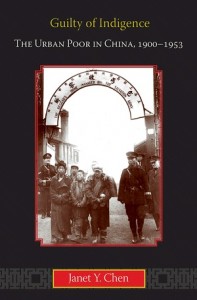
In the early twentieth century, a time of political fragmentation and social upheaval in China, poverty became the focus of an anguished national conversation about the future of the country. Investigating the lives of the urban poor in China during this critical era, Guilty of Indigence examines the solutions implemented by a nation attempting to deal with “society’s most fundamental problem.” Interweaving analysis of shifting social viewpoints, the evolution of poor relief institutions, and the lived experiences of the urban poor, Janet Chen explores the development of Chinese attitudes toward urban poverty and of policies intended for its alleviation.
Chen concentrates on Beijing and Shanghai, two of China’s most important cities, and she considers how various interventions carried a lasting influence. The advent of the workhouse, the denigration of the nonworking poor as “social parasites,” efforts to police homelessness and vagrancy–all had significant impact on the lives of people struggling to survive. Chen provides a crucially needed historical lens for understanding how beliefs about poverty intersected with shattering historical events, producing new welfare policies and institutions for the benefit of some, but to the detriment of others.
Drawing on vast archival material, Guilty of Indigence deepens the historical perspective on poverty in China and reveals critical lessons about a still-pervasive social issue.
Janet Y. Chen is assistant professor of history and East Asian Studies at Princeton University.
Posted: February 24th, 2012 | No Comments »
Many thanks to Colin Day, my former publisher at Hong Kong University Press, who picked up a copy of Midnight in Peking while flying through Hong Kong at Christmas. His eagle HK Heritage eye went straight to one of the photos – the one below in fact, of ETC Werner and his wife Gladys Nina Ravenshaw on their wedding day in 1914 at St John’s Cathedral. The photo was simply labelled as the date of the wedding and St John’s at the location. At the time I did wander up around St John’s, a lovely church in Central, but didn’t find the stairs. I assumed that they were adjacent to the Cathedral at some point but had been lost in the major development at the rear of the building that created, via a cut through, what is now the multi-lane Garden Road running up to the Peak Tram terminal. However, Colin begged to differ – there were never any stairs similar to the ones the rather stiffly new married couple are photographed on…and so a little hunt began… First the 1911 picture and then the rest of the story.
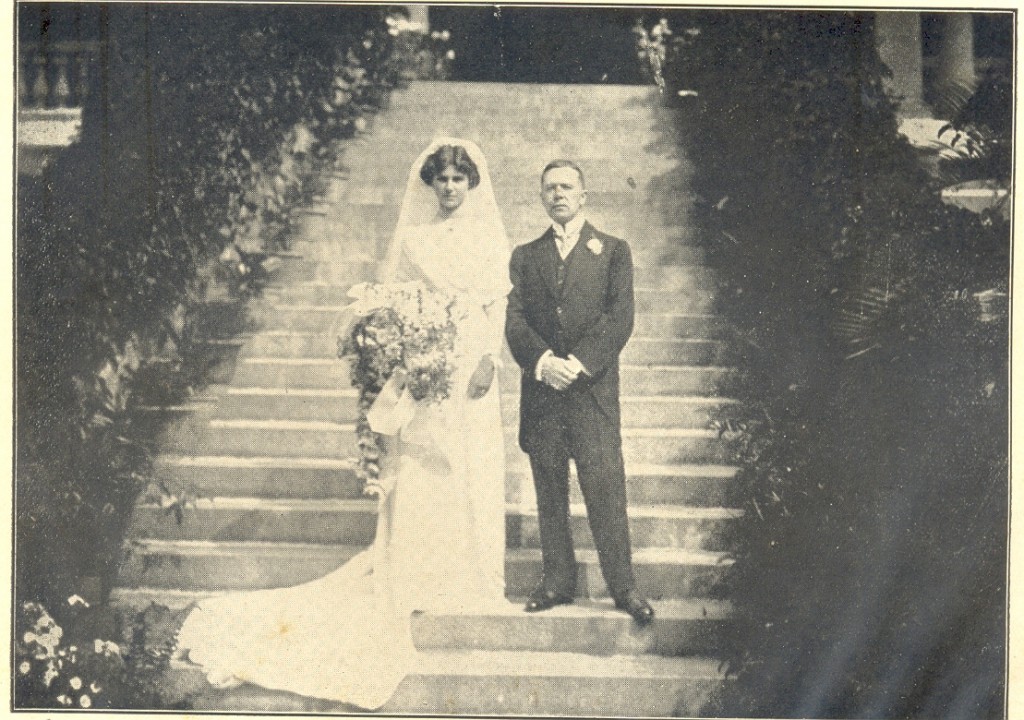
St John’s is one of the former colonial structures that cluster on what is known as Government Hill bounded by the Upper Albert Road, Queen’s Road Central, Garden Road and Glenealy. This area has been the centre of Hong Kong’s government since effectively the foundation of the colony. Government House and the former Central Government Offices dominate the hill while lower down are St John’s, the Court of Final Appeal (housed inside the former French Mission Building) and the Battery Path ambling between all these structures. The current Central Government building, behind locked gates, is rather uninteresting having been completed in the late 1950s. This replaced a building that was there since the 1930s. The stairs remain and are just a short walk (even in a wedding dress) from the Cathedral.
Now, as the photo below shows, the steps lead up to a locked gate and the 1950s structure. In the background of the picture above you can see the veranda of the original, or “old”, Central Government building, known as the Secretariat Building and dating back to the mid-1800s I believe. If anyone knows different or has a picture of the Secretariat Building I’d love to see and/or hear anything about it.
So there we are – ETC Werner and Gladys Nina stood one September day in 1911 upon the stone steps that led up to the Secretariat Building close to St. John’s Cathedral. The steps remain, perhaps slightly adjusted and repointed over the years but there all the same…
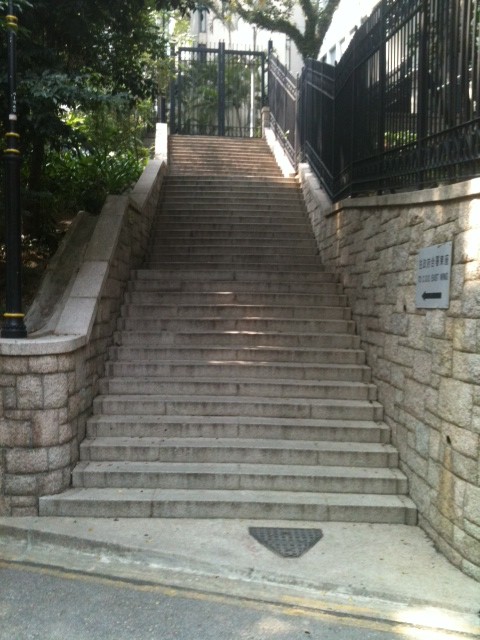 the steps leading up to the Central Government complex and a locked gate…the drain in the foreground by the way is English made and dated 1935. There’s additional foliage to one side of the stairs and, of course (this is now modern China), insurmountable gates and fences all around. But the stairs remain.
the steps leading up to the Central Government complex and a locked gate…the drain in the foreground by the way is English made and dated 1935. There’s additional foliage to one side of the stairs and, of course (this is now modern China), insurmountable gates and fences all around. But the stairs remain.
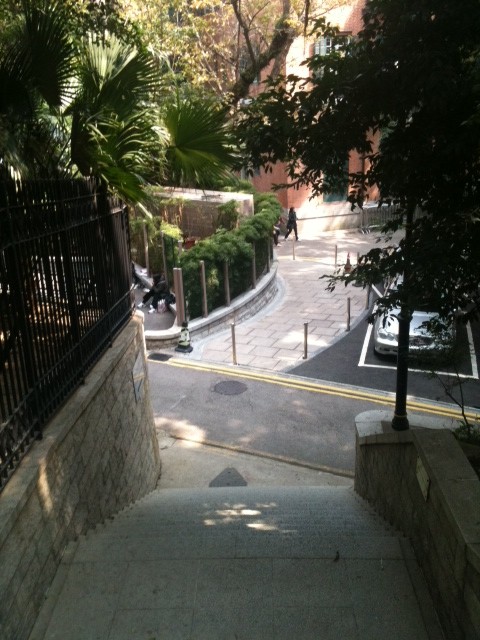 The view down the stairs towards the old French Mission Building (now the Supreme Court)
The view down the stairs towards the old French Mission Building (now the Supreme Court)
Posted: February 23rd, 2012 | 1 Comment »
I’ll be at the Perth Writers Festival that runs between February 23-26 on the grounds of the University of Western Australia. It’s all part of the larger Perth Festival.
Details of all the events are here and my events here with details below in brief – if you’re in Perth do come along and say hello
24/2/12 – Blogging the Revolution – 7-8pm – Marieke Hardy, John Birmingham and me in a session chaired by Sarah Knight
25/2/12 – Meet the Neighbours – 11am-12pm – me, Michael Wesley, Chetan Bhagat and Krishna Sen talk China/India and all that
26/2/12 – The Story That Won’t Let You Go – 3.30-4.30 – me, Donovan Hohn and Andrea di Robilant talk about our respective books

Posted: February 22nd, 2012 | No Comments »
With Penguin reissuing a new edition of The World of Suzie Wong and also that I happened to stroll through Lockhart Road and Wanchai last night I thought a round up of various Suzie Wong book covers (there are plenty of great posters from the movie too but I’ve stuck to the books) seemed in order. Of course many feature Nancy Kwan and William Holden from the film. No particular order – just as they come – make of them what you will.Though I’ll admit that the last one is the cover of the edition I’ve had on my shelves for years and years and always seem to best capture the essential sad loneliness of the prostitute (but then I’m a romantic at heart).

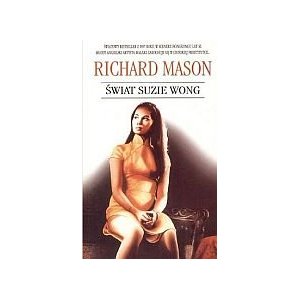
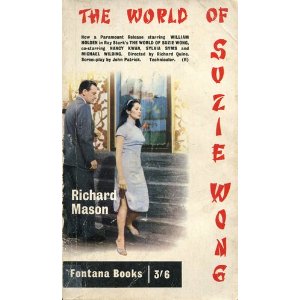


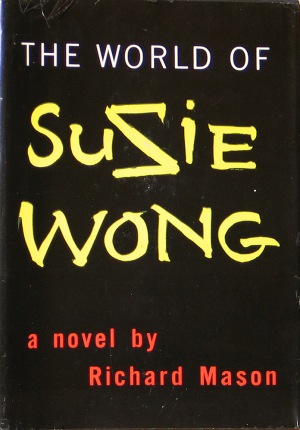


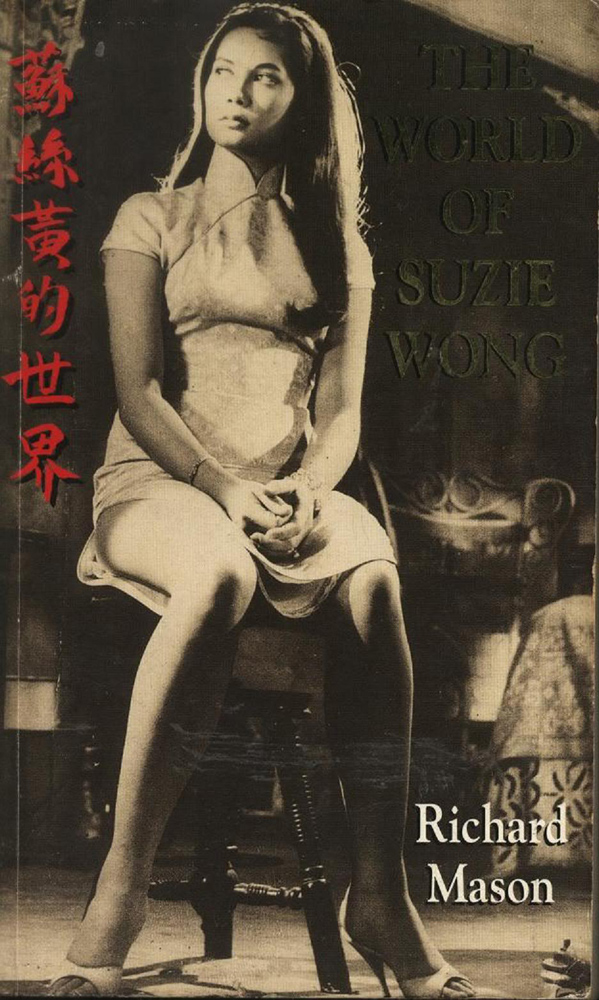
Posted: February 21st, 2012 | 1 Comment »
One of the architectural masterpieces of the former Legation Quarter of Peking is St Michael’s Church (Catholic) on Dongjiaominxang (formerly Legation Street). It’s a lovely little church though sadly always shut up and largely inaccessible (unless someone leaves the gate open and you can sneak in). The church was originally under the management of the French Embassy near by and opened in 1904. Sadly the original stained glass windows are gone – destroyed either during the Cultural Revolution or just after when the building became a middle school for a time – stained glass in China rarely survives long!! The windows there now are cheap replacements with no craftsmanship.
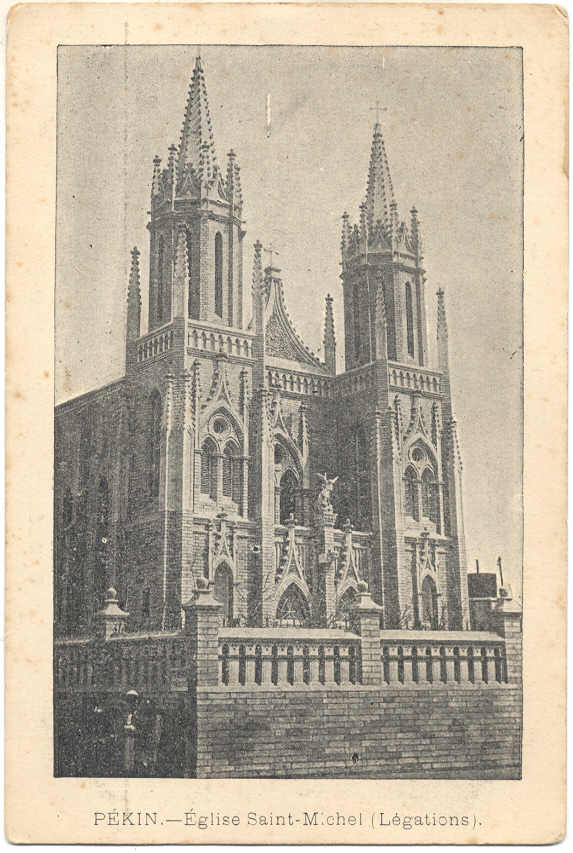
Posted: February 21st, 2012 | No Comments »
Apologies for late posting!
Midnight in Peking − Life in the Legation Quarter Duke of Windsor Social Service Building Tuesday, 21 February 2012
In January 1937 the body of a young English woman named Pamela Werner was discovered at the base of the Fox Tower, one of the ancient watchtowers guarding Peking. The victim was the young daughter of E.T.C Werner, a former British diplomat to China and a noted sinologist. Despite efforts by both the Peking Municipal Police and a British Police Officer from Tientsin the case was never solved.
Over seventy years later a chance discovery by writer Paul French, at the National Archives in Kew, London unearthed an uncatalogued file of correspondence and documents sent from China before WW II. Included in this file were case reports and letters concerning Pamela Werner’s death. In his recently published book Midnight in Peking, Paul French retraces the investigation and circumstances under which it took place. This talk provides a fascinating insight into life in the Legation Quarter of Peking in the 1930’s just prior to the Japanese takeover and World War II.
Speaker: Mr Paul French
Date/Time: Tuesday, 21 February 2012, 6:30 pm
Venue: Duke of Windsor Social Service Building, 2/F, 15 Hennessy Road, Wanchai
Posted: February 21st, 2012 | No Comments »
I’m not exactly sure why the world needs a reissue of Richard Mason’s World of Suzie Wong? And I’m not sure the original cover art (I know the guys famous and that but still…) has stood the test of time to be honest. I have an old battered copy somewhere with Nancy Kwan on the cover, from the movie. I did like the movie as a kid – though I haven’t seen it again in ages so that too might not have stood the test of time. Wanchai of course still has a few Suzie Wong’s around at night – a bit more hot pants than cheongsams these days, eerrr, so I’ve heard. The film is worth revisiting I think for its images of a Hong Kong now largely gone – Wanchai still teems but not quite in the same teeming way as the 1960s. I’ll probably get slagged of by the politically correct crowd but I do think you’d have include Mason’s book in a list of the bets books about Asia by foreigners. Feel free to disagree though.
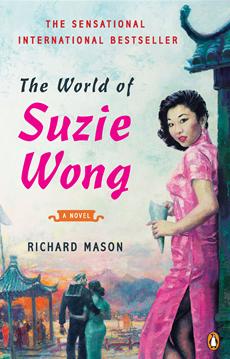
 One of Kelly’s Burmese portraits
One of Kelly’s Burmese portraits















